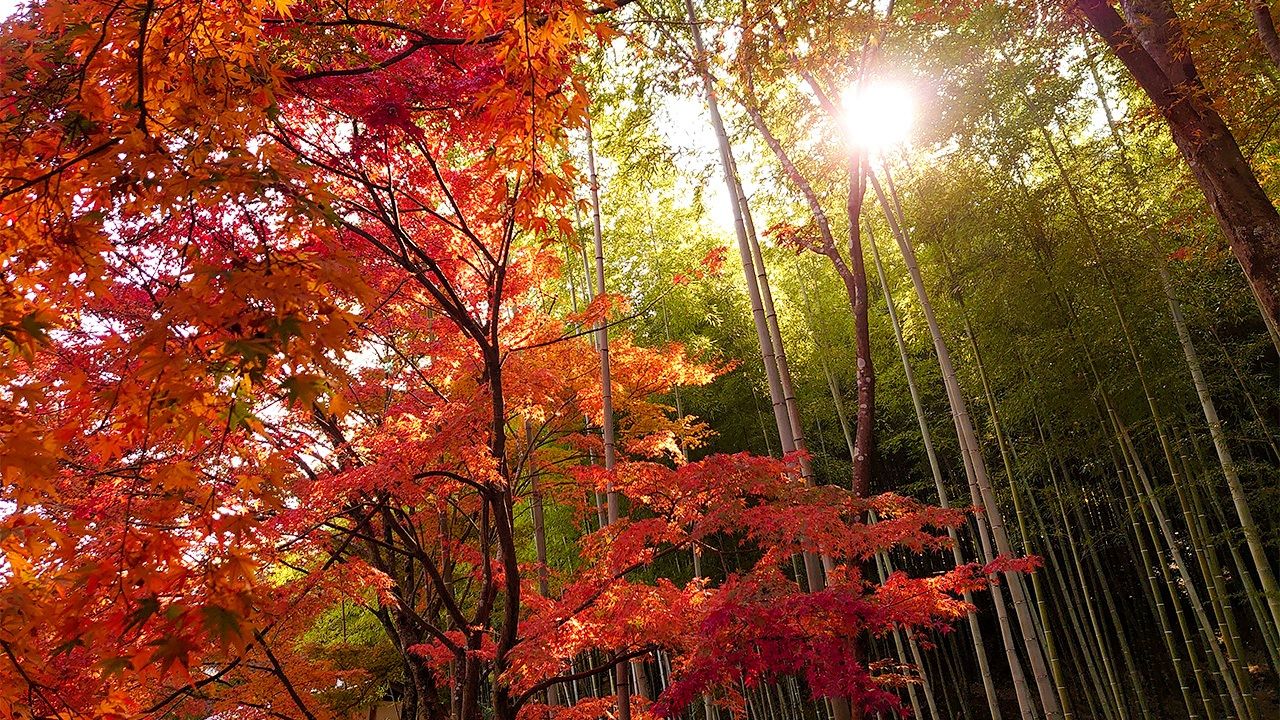
Card Game Battles and Classical Poetry Journeys
Lifestyle Culture Travel- English
- 日本語
- 简体字
- 繁體字
- Français
- Español
- العربية
- Русский
Tatami Tussles
When I was a university student, I played competitive karuta for a period. The popularity of the manga Chihayafuru has greatly raised the profile of this pastime over the past decade or so. Even so, there are very few players of this game, which requires them to match the second halves of poems written on cards spread out in front of them with the first halves that are read aloud. Unlike games like go or shōgi, there are no money prizes in karuta, so although male and female champions are crowned every year, they tend to have other occupations.
There may not be any professionals earning a living through their talent, but top-level karuta contestants should not be disrespected. This is a very different level from the simple pastime customarily enjoyed in Japan at New Year or as an elementary school activity. The bare minimum to entry is thoroughly memorizing all 100 poems—which come from the classic anthology Hyakunin isshu, collating waka by 100 different poets— but there are other high hurdles. In particular, it is essential to know at which point one can be certain that a particular waka is being read. For example, there are eight with unique first sounds such as mu and su, but in other cases like the two poems beginning kimi ga tame, it is necessary to wait for the sixth syllable to be sure. The number of sounds needed for each card is known as the kimariji, or “deciding characters.”
When it comes to competition, each of the two players is given 25 cards to lay out in their preferred arrangement, strategically so the positions are easy to remember oneself, but unusual enough so as to be difficult for one’s opponent. Then they have just 15 minutes to commit to memory where all the 50 cards in play are, and which 50 cards are not in play. Once the reader starts intoning the poems, they have to react as soon as they can be sure to touch the right card or sweep it to one side. Top players need good ears, sturdy knees, lightning reactions, superlative memories, and the endurance to maintain focus through matches that last over an hour. Competitive karuta has been dubbed a “martial art on tatami mats,” and this is no exaggeration. When experts battle it out, it can take just a hundredth of a second for a successful sideward sweep.
I played karuta as an exchange student in Waseda University from 2011, having stumbled on the club booth during orientation. After attending as an observer, I made up my mind right away to sign up, cramming to learn the rules and memorize the kimariji after joining. I got so hooked during my year in Japan, I missed it sorely when I returned to Taiwan in 2012. The following year, when I went back to Japan for graduate study, I did my best to find an apartment that had a traditional room with tatami, where I could practice karuta. This was how crazy about the game I was—even if finding somewhere with reasonable rent meant I ultimately had to give up my tatami dreams.
In a famous Chihayafuru scene, the character Taichi is told to devote his youth to karuta. Unfortunately, I could not do this myself. I continued for a while after starting graduate school, but found I did not have the physical strength, I was busy with study, and I could not adjust to the athletic-meet atmosphere, so I stopped going to practice sessions. I now have only hazy memories of the kimariji and other facets of the game.
More Painful than Death
Incidentally, my favorite entry in the Hyakunin isshu is poem 50 by Fujiwara no Yoshitaka.
Kimi ga tame
Oshi karazarishi
Inochi sae
Nagaku mogana to
Omoi keru kanaFor you,
I would have given
even my life.
Yet now I wish
to live for many years.
Because of the other poem beginning Kimi ga tame, this is one of the six special cards in karuta where six sounds are required for definitive identification. That is not the reason why I like it, though. It is written by the poet after spending the night with a woman, so it is a waka of love, but I particularly enjoy the unusual concept. Broadly speaking, the poem means something like, “I thought that I wouldn’t care at all about laying down my life, but now I wish to live as long as possible with you.”
There are many classical Chinese poems on the topic of love, and it is not unusual to find those saying, “I would die for you,” or “I want to be with you until the end of the world.” As far as I know, however, there are none that put the two ideas together. One might say that this is a very Japanese way of thinking.
In the Chinese worldview, death is often considered the ultimate state that humans must face, so it is an effective reference point when protesting one’s love. This straightforward idea is found in a lot of Japanese poetry too. However, Yoshitaka’s poem could be said to turn this on its head, in which death and the wish to die are positioned more as the default than an ultimate state. The waka tends to present long life as more painful than death in its expression of love. There is something that touches the heart in a version of longevity that carries with it each day a vague wish for oblivion, and I believe this is among the very best of love poems.
A Pilgrimage to Ōmi Shrine
Perhaps because I played competitive karuta, although I have little knowledge of waka, I have great affection for the Hyakunin isshu. I always think of visiting places mentioned in the collection—Mount Ogura, Amanohashidate, Mount Amanokagu, the island of Awajishima, the Uji River—and I feel a sudden thrill if I happen upon a related site on my travels. It might seem a rather frivolous approach to classic literature.
My favorite of all the places I have been to connected with the Hyakunin isshu is Ōmi Shrine in Shiga Prefecture, the setting for Chihayafuru, which I visited in 2014.
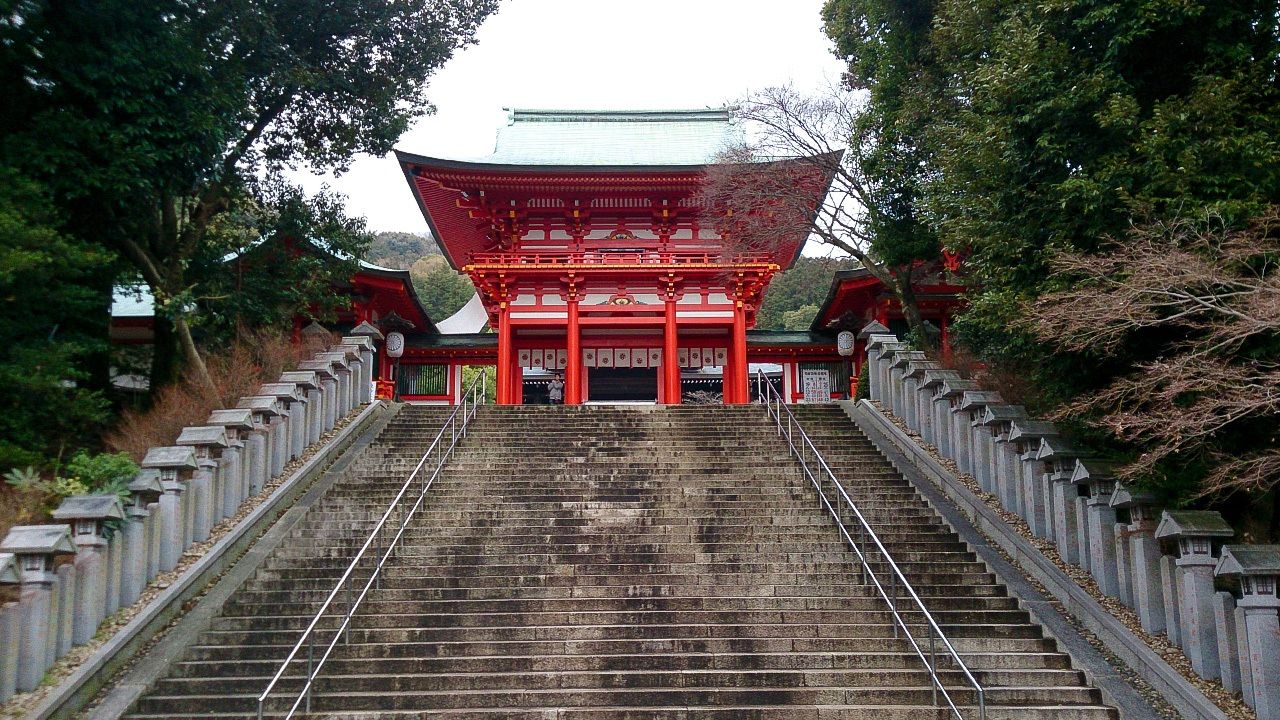
The steps leading up to Ōmi Shrine in Shiga Prefecture.
It was mid-March and still chilly, before the cherry trees came into bloom. I changed trains at Ōtsukyō Station. This was just when the local Keihan Ōtsu Line had trains decorated with Chihayfuru themes, and had just started running those adorned with designs for the anime Chūnibyō demo koi ga shitai! (Love, Chunibyo & Other Delusions). I loved both, so this was amazing. I bought a day pass ticket and hopped on and off local services again and again. I was lucky that there were almost no tourists and both the trains and platforms were virtually empty.
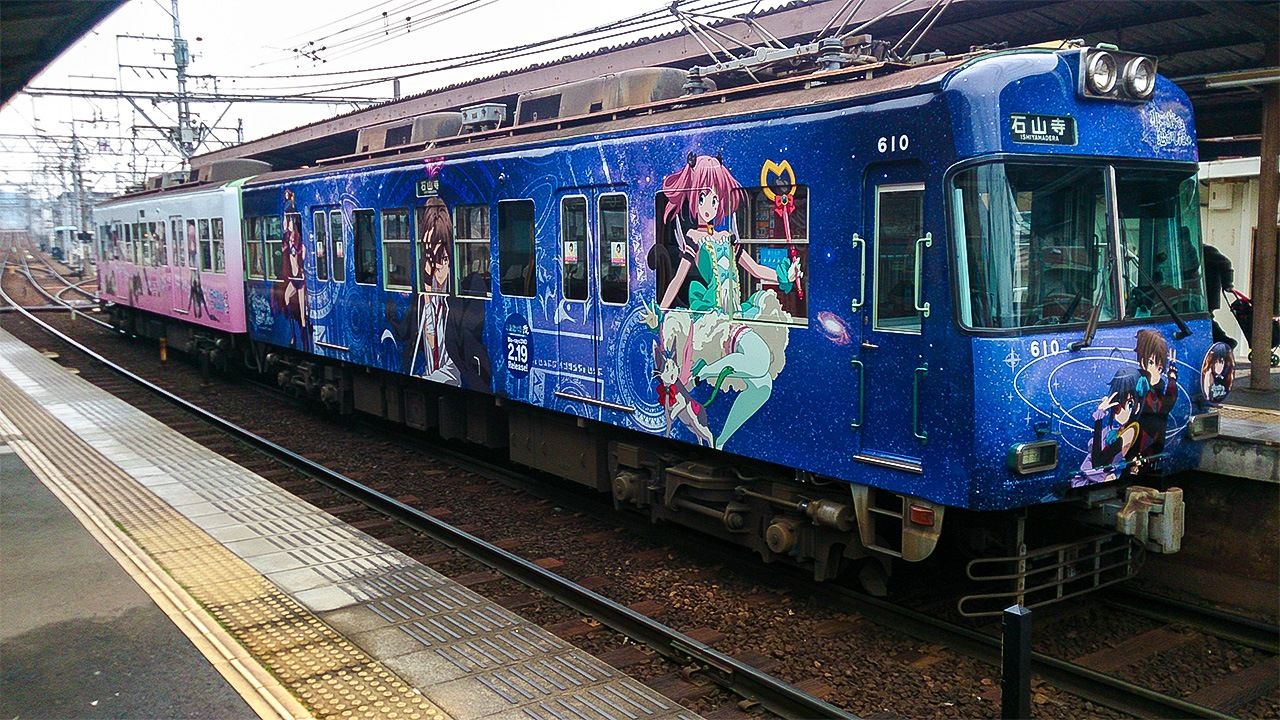
A 2014 train decorated with designs from the anime Chūnibyō demo koi ga shitai! (Love, Chunibyo & Other Delusions).
Later, I disembarked at Ōmijingūmae Station, and walked through peaceful residential streets until I saw the great torii gate of the shrine. Beyond the torii, imposing stone steps led up to where the vermilion tower gate stood, in an atmosphere of calm—the gate I had seen inside so many times in Chihayafuru.
Ōmi Shrine was constructed relatively recently, in 1940, and is dedicated to Emperor Tenji, who wrote the first of the poems included in the Hyakunin isshu in the seventh century.
Aki no ta no
Kariho no io no
Toma o arami
Waga koromode wa
Tsuyu ni nuretsutsuThe coarse thatch of the
autumn rice field’s
harvest hut.
My sleeves growing
wet with dew.
Thus, the shrine is closely connected with the Hyakunin isshu and competitive karuta, and is the site where championship matches are held each year. Like the Kōshien Stadium for young baseball players, it is a place of pilgrimage for karuta fans, not to mention devotees of Chihayafuru.
Around the grounds there are numerous monuments with poems inscribed, and when I went, there was a room with exhibits of waka from Hyakunin isshu on hanging scrolls. The omikuji (paper fortunes) had a Chihayfuru version based on the Hyakunin isshu and an ordinary version using other waka. Also available was an omamori (amulet) meant to encourage artistic improvement, with a picture of Emperor Tenji and his poem stitched on it.

Poem 50 by Fujiwara no Yoshitaka on display in Ōmi Shrine.
The karuta championship takes place in a building called the Ōmi Kangakukan. It was off-season when I was there in mid-March, so there was almost no sign of life in the rest space or the tatami room for matches. It was curious to think that during a competition, they would be full of players, with all their tension and excitement. I have no interest in baseball, soccer, or rugby, but I would like to spectate at a competitive karuta match.

The Ōmi Kangakukan, the theater of dreams for competitive karuta.
Incidentally, Chihayafuru takes its title from the Hyakunin isshu poem by Ariwara no Narihira.
Chihayaburu
Kamiyo mo kikazu
Tatsutagawa
Karakurenai ni
Mizu kukuru to waUnheard of even
in the age of gods.
The waters of
Tatsutagawa
turning crimson.
I finally got to visit the river Tatsutagawa six years later in the autumn of 2020. It was just in the season of the crimson leaves that float on the surface of the water in the poem. As the saying has it, “Yoshino’s cherry blossoms, Tatsutagawa’s autumn leaves.” This is how highly regarded the Nara Prefecture spot is for its foliage, so I wanted to go there.
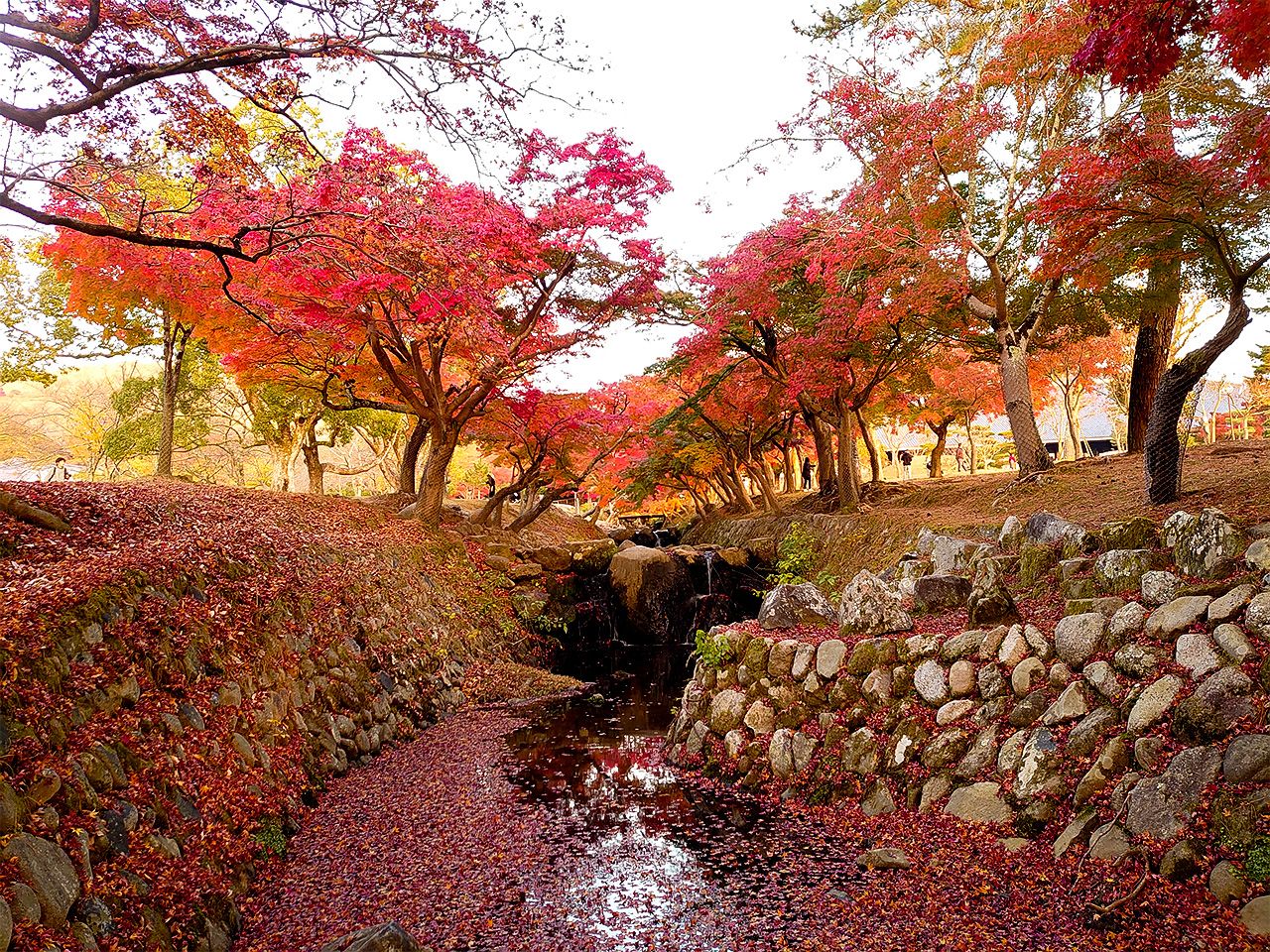
Crimson leaves in Nara Park are more fitting to the poem than those at Tatsuta Park.
I checked before going and found that Tatsuta Park, beside the river, was a particularly good place to view the leaves. I took a taxi from Ōji Station, the nearest rail connection, but the driver did not immediately know where it was. Apparently, it is not a well-known tourist destination. And when I did get there, all the people I passed in the long, narrow park seemed to be local residents, many out walking with their dogs or children. I was apparently the only one who had made a special sightseeing trip.
Unfortunately, there was not as much of the foliage as I had hoped to find. It was nothing like the scene in Ariwara no Narihira’s poem. Even by Nara Prefecture standards, the foliage season in Tatsuta Park starts late, in mid-November. It turns out the location of what is now known as Tatsutagawa is also different from when ancient poems like those in the Hyakunin isshu were written.
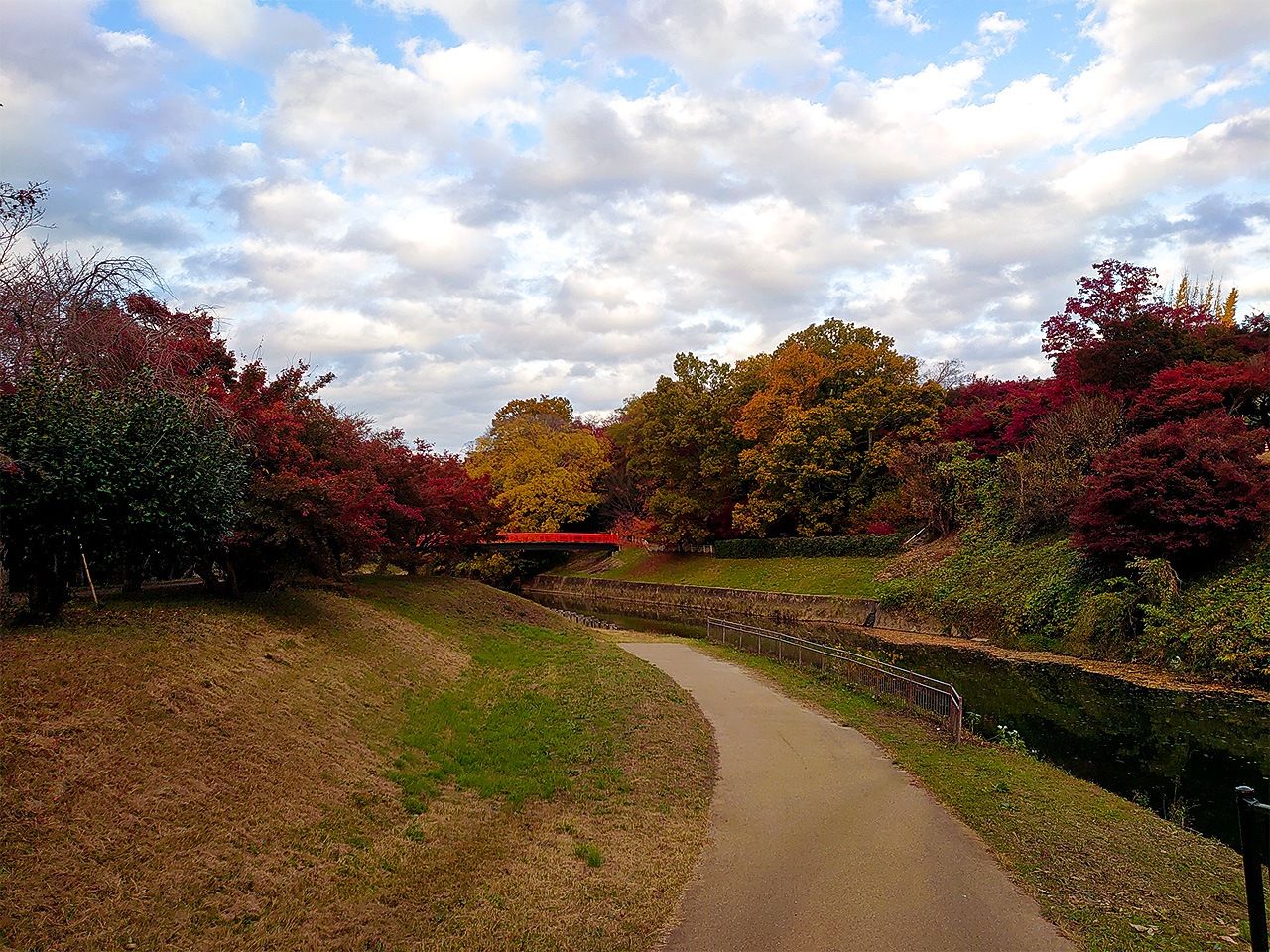
Tatsutagawa and Tatsuta Park, where the leaves are only just beginning to change.
The Splendors of Court Culture
Perhaps the success of Chihayafuru paved the way for an appearance by competitive karuta in the Case Closed series. The title of the 2017 movie Meitantei Konan: Karakurenai no rabu retā (Case Closed: The Crimson Love Letter) was clearly influenced by the same poem by Ariwara no Narihira in its title. As one might expect, the depiction of karuta was far less realistic than that in Chihayafuru. Still, I fell in love with the theme song by Kuraki Mai, “Togetsukyō (kimi omou)” (Togetsukyō, Thinking About You), and although the Hyakunin isshu played little part in the film, in my head I came to think of the bridge Togetsukyō as a related site. As I say, very frivolous.
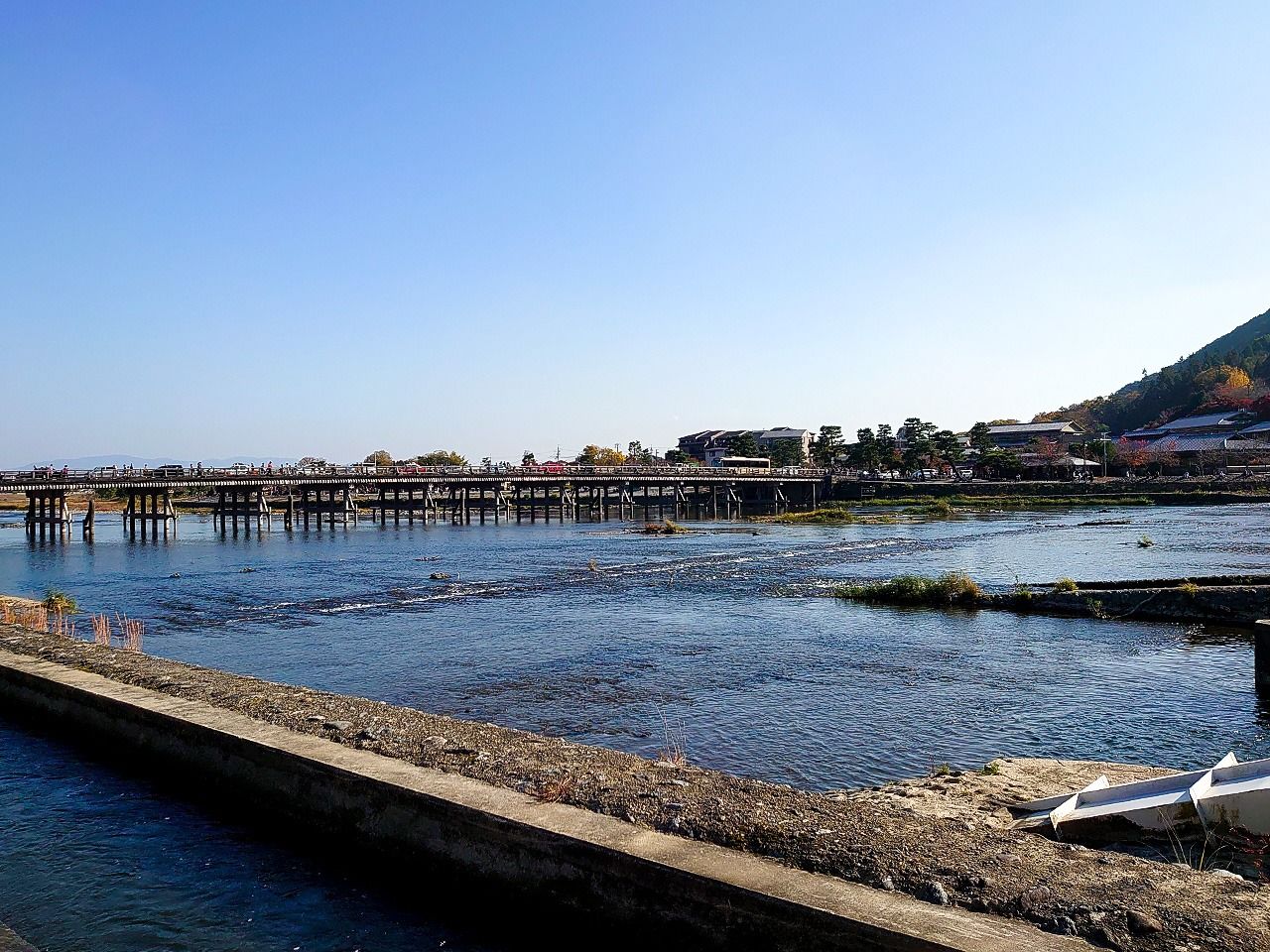
The bridge Togetsukyō in Kyoto’s Arashiyama district.
The great bridge Togetsukyō crosses the Katsuragawa in Kyoto, and it is extraordinary to stand on top and watch the waters rushing from the direction of the autumn-hued Arashiyama hills. I went there as a side trip from Nara, but as a celebrated tourist spot, it was swarming even on a weekday afternoon, mostly with students on school trips.
In the Kameyama Area of the nearby Arashiyama Park, there are various stone monuments with poems from Hyakunin isshu inscribed. It was really fun to wander, read, and recall the splendors of ancient court culture. Having said this, there was a modern Chinese poem by Zhou Enlai among them, which I remember throwing me into confusion, as if I had traveled through time. Further on, through a serene and lushly verdant bamboo forest path, the temple of Tenryūji had just entered the perfect season for autumn leaves. The contrast of crimson and green was exquisite. I ended up staying here too long, which meant I was a few minutes late getting to the main Hyakunin isshu site—the remains of Shiguretei in the temple of Jōjakkōji, where Fujiwara no Teika is said to have compiled the anthology. The temple was closed, so I could not visit. I wish to make up for my painful error, and visit again one day.
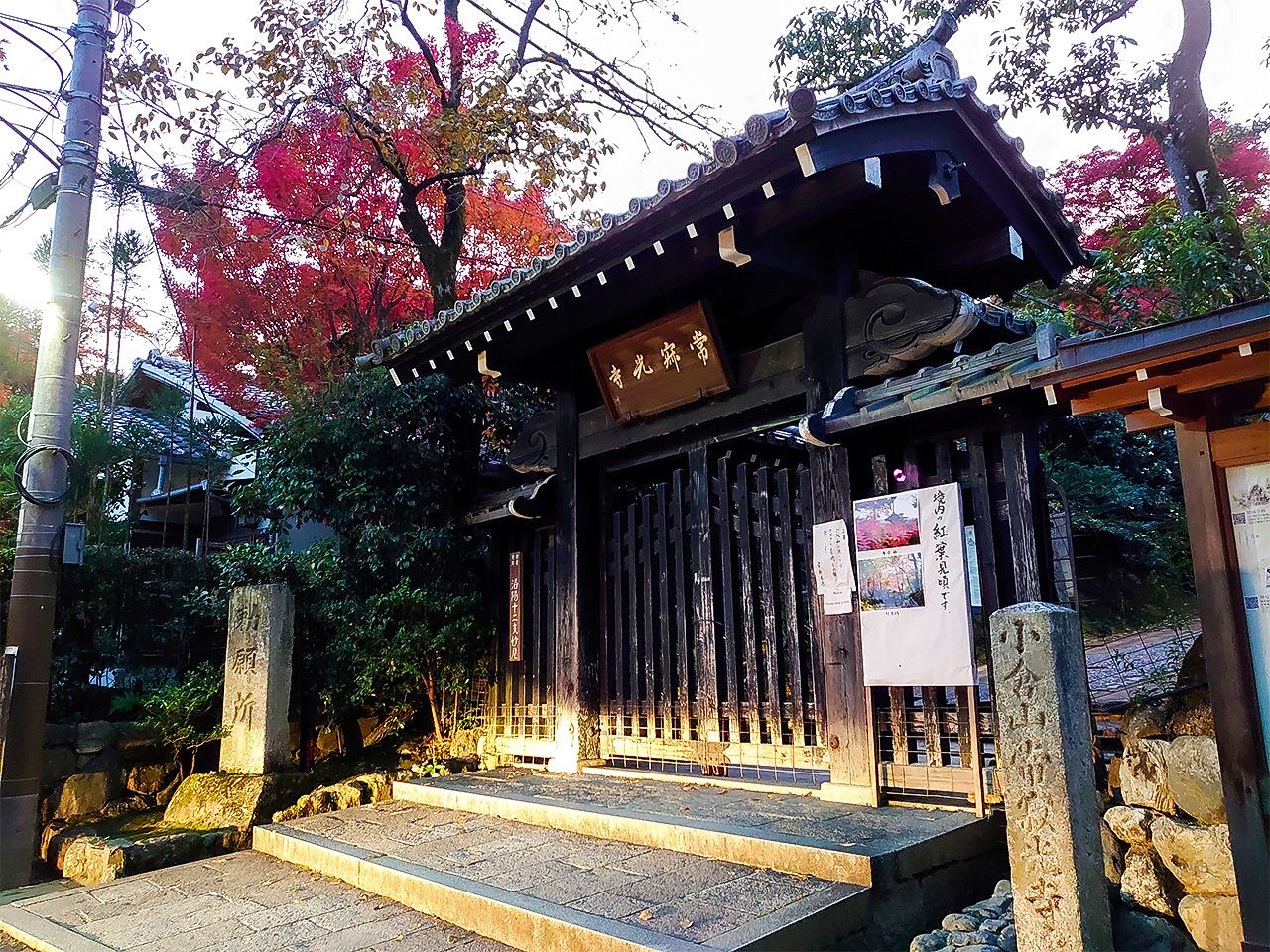
The gate is shut at Jōjakkōji. Fujiwara no Teika is said to have compiled the Hyakunin isshu anthology on the temple grounds.
The COVID-19 pandemic led to the cancelation of many karuta matches in 2020. Even when they restarted, there were restrictions as players had to wear masks and no loud voices were allowed during matches. Masks make it harder to breathe during long bouts, and do not match the refined dress that fits the occasion. I write this essay at the end of 2020, looking forward to an improvement in the situation in the year to come. With hopes for a new beginning, I finish with the waka customarily read before a karuta tournament.
Naniwa-zu ni
Saku ya kono hana
Fuyu gomori
Ima o harube to
Saku ya kono hanaIn Naniwa Bay,
the flowers bloom
after winter sleep.
Now spring has come
and flowers bloom.
(Originally published in Japanese on February 13, 2021. All photographs courtesy of the author. Banner photo: The striking contrast between the red of autumn leaves and the green of a bamboo forest.)